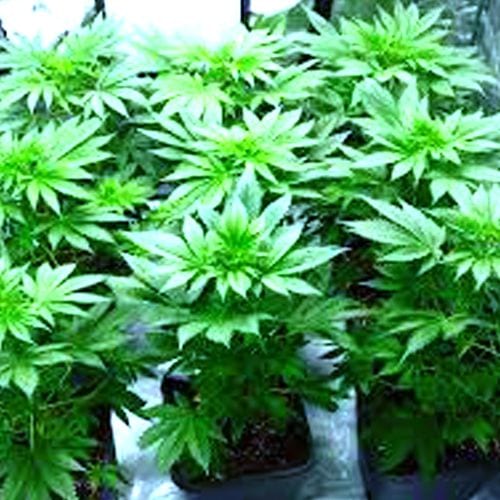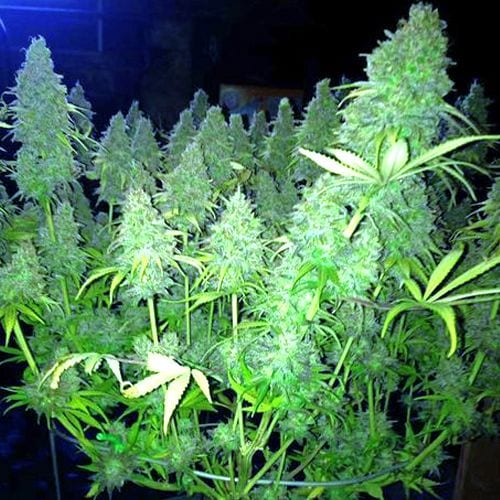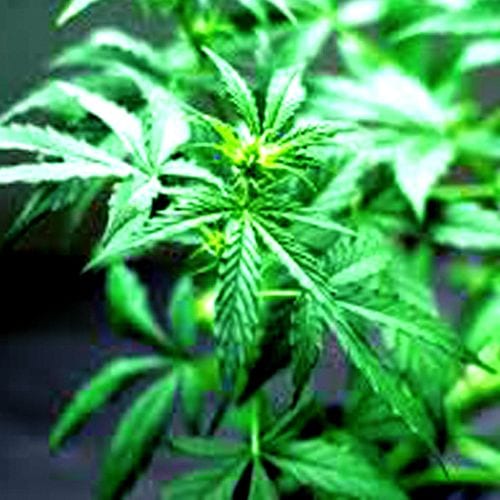Cannabis is a “photoperiod” plant, which infers the proportion of light gotten each day picked when the plant starts blossoming or growing buds. This article elucidates how much light multi-day your photoperiod cannabis plants need to grow and start growing so you get to a happy harvest day.
Providing the right amount of light for the right time period is probably the biggest factor to concentrate upon if you are a desperate one regarding harvesting thick and dense cannabis buds!
Read the cannabis light schedule guide properly, and get the best cannabis harvest of your growing journey now!
Shall we move on?
Cannabis Light Schedules
Contents
- Vegetative – Seedling or clone prompts Vegetative Stage –Permit 18-24 hours of light multi-day.
- Sprouting – Flowering (Budding) Stage prompts Harvest –Give 12 hours light and 12 hours diminish each day.
Seedling or Clone

While not in actuality a “sort out,” all growth starts with cannabis seeds or clones.
Outside
Some outdoors growers start their plants inside to give them a headstart before putting plants outside. On the off chance that you’re growing cannabis outside with seeds, you should hold up until a large portion of a month after the spring equinox to put your seeds outside.
In the northern portion of the globe, this infers seeds go outside in or after April; In the southern side of the equator, seeds go outside in or after October. For growers beginning with cannabis clones, generally, you should hold up a large portion of a month longer than with seeds.
Cannabis clones are more disposed to blossoming ahead of schedule outside than seeds, so you should need to put your clones out in pre-summer or pre-summer. (What are clones?) If you live in a cool climate, you ought to hold up until after the last ice before putting your plants outside.
Freezing temps will kill cannabis plants. Strain choice is indispensable. A few strains sprout sooner than others. For outside cultivators in infection environments, it’s fundamental to guarantee you grow a strain that is facilitated by your adjacent atmosphere, so plants are set up to gather before temperatures drop.
Vegetative Stage

The vegetative stage is a champion among the most basic bits of the life of your cannabis plant. The vegetative stage is the growing period of the plant.
Exactly when in veg, cannabis plants wind up more prominent and taller, growing just stems and leaves. As a maker, you can control the size and condition of your plants in the vegetative stage using essential getting-ready procedures. In the midst of the entire vegetative stage, the plant does not convey buds by any stretch of the growing energy.
It just grows stems and leaves. In the midst of the vegetative stage, plants will by and large turn out to be outstandingly fast, especially when conditions are right.
What keeps cannabis in the vegetative stage?
Brief nights keep cannabis plants in the vegetative stage. You can keep a cannabis plant in the vegetative stage for basically never-ending as long as the plant continues getting brief nighttimes (shorter than 1s-12 hours, dependent upon the strain). Cannabis will remain in the vegetative stage as long as the plant gets brief nighttimes (under 11-12 hours of dimness consistently)
Notwithstanding whether you’re growing inside or outside, you ought to guarantee your cannabis plants get something close to 13 hours of light each day to stay in the vegetative stage. If your plant gets several long nighttimes, it may start growing before you need it. The plant can get as much as 24 hours of light multi-day while in the vegetative stage.
Various indoor growers allow 18-24 hours of the light multi-day (known as 18-6 or 24-0 light timetables) in the midst of the vegetative stage to stimulate faster vegetative advancement.
Furthermore…
Make an effort not to need to worry over light date books. For growers that would incline not to concentrate on light timetables, there are auto-sprouting strains of cannabis, which will thus be understood for as far back as they can recall in around 3 months, paying little mind to what light schedule is given. For specific growers, an auto-blooming strain may be more clear than an ordinary (photoperiod) strain.
Inside
Most indoor growers allow 18-24 hours of light multi-day (known as 18-6 or 24-0 light timetables). Giving your cannabis plants all the more extended lengths of light each day in the sprouting stage will bolster speedier improvement.
Language: When a cultivator gives 18 hours of light multi-day and 6 hours of murkiness, this is routinely known as the 18/6 light timetable. For 24 hours consistently, this is implied as the 24-0 light date-book.
Outside
For whatever time span that your plant is getting a great deal of light multi-day, your plant will subsequently stay in the vegetative stage from pre-summer until pre-fall. Each strain is to some degree, exceptional.
Flowering Stage

Cannabis starts growing when plants consistently get under 12 hours of nonstop dimness. After plants start growing, they should continue getting long, dull nights until they gather, or they may come back to the vegetative stage.
Inside
When to start blossoming a cannabis plant? Inside, most growers put their plants on a 12-12 timetable to begin blooming. Outside, the plant will regularly start growing in pre-fall when nighttimes are growing longer and longer as winter approaches. Essentially guarantee plants aren’t exhibited to light in the midst of their diminish period!
What is 12-12 Lighting?
The indoor growers ought to dishonestly affect blooming/growing in plants by changing the light timetable, so the plant gets only 12 hours of light multi-day and 12 hours of ceaseless fogginess. At the point when the plant is changed over to the blossoming (12/12) light timetable, there is regularly an extra a month and a half 5 months (ordinary 2.5 months) before the plant’s buds are set up forgather.
Outside
Outside growers hold up until their cannabis plants start ordinarily blossoming without any other growers, generally speaking after mid-summer when days start getting shorter than 12 hours. It’s basic to guarantee plants aren’t introduced to light amid the night in the midst of their dull period, even street lights or spotlights, as this can keep cannabis plants from blossoming fittingly.
Growing Indoors? Not Sure When To Switch To Flowering?
So indoor growers have a choice to bloom their plants at whatever point they need When is the best time to start sprouting your cannabis inside? The veritable answer is that it’s a matter of grower tendency and besides depends upon what last item you’re looking for. There are two vital considerations while picking the fortunate time to change to 12/12: the plants’ age and height.
Age:
Some growers feel that a marijuana plant that has been growing from seed won’t make a similar number of buds or have enough gum age if the plant isn’t given any under 60 days in the vegetative stage to grow before it’s changed over to the blossoming stage. This isn’t substantial.
Various cultivators begin blossoming not long after in the wake of building up a seed in order to keep plants pretty much nothing and short. This is every now and again called “12-12 from seed.” Just remember, paying little heed to what you do, a young cannabis plant won’t start blossoming until it is 2-3 weeks old.
Notwithstanding whether you put a seed on a 12-12 plan from the soonest beginning stage, it won’t start properly growing for around 3 weeks. When growing with cannabis clones, age isn’t an issue, and growers can change explicitly to blossoming once your clone has set up roots.
This is in light of the fact that regardless of the way that a clone may be close to nothing, it’s up ’til now a ‘grow’ plant since it is made of a piece from a growing plant. Connected clones will continue by and a large build-up significantly faster for an underlying couple of weeks than plants created from seed. Notwithstanding, age isn’t exactly a touch of an issue, and you should switch your light timetable at the time that best meets your necessities.
Stature:
A general guideline is that your weed plant will twofold or triple in size in the midst of the blooming stage from the point where you first change over the light timetable to 12/12. Some plants will grow progressively, and some will turn out to be less, yet a conventional rule is to change your light timetable to blooming when your plants have reached their last needed height.
Contorting, known as “LST” or “low-stress planning,” can be used to control colas that get unnecessarily tall. Fundamentally contort too-tall colas down and a long way from the point of convergence of the plant. Some growers will even, to some degree, break or “supercrop” branches to get them to contort at a 90-degree point.
Furthermore…
Height may be the fundamental concern for those growing in a little area. Regardless, various methods are open to growing a short, thick weed plant or training your cannabis plant to form into any shape you need. In perfect conditions, if stature and area aren’t an issue, you would certainly need to vegetate your cannabis plant for 60 days or more before transforming it to bloom.
This gives your plant a ton of time to wind up immense (so you get more prominent yields) and empowers new growers to dial in their improvement before plants enter the sensitive blooming stage. In the vegetative stage, it is definitely not hard to recover from issues. Anyway, issues are dynamically authentic in the blooming stage, where misunderstandings can fundamentally hurt your last yields.
Giving cannabis plants extra time in the vegetative stage, and putting aside exertion to set them up to suit your space, will give you the best last yields. In any case, in the event that space is tight, it’s more astute to switch when the plant is a vast segment of the last needed stature or even just to undertake to bloom your cannabis plant straight from seed.
Cannabis Light Schedules: The Conclusion
Now, we provided you with the exact knowledge which was gathered by experimentations done by my expert team. Guys, you don’t need to apply any rocket science here, and all you need to do is follow the right timing, and most importantly, be smart and keep checking!

